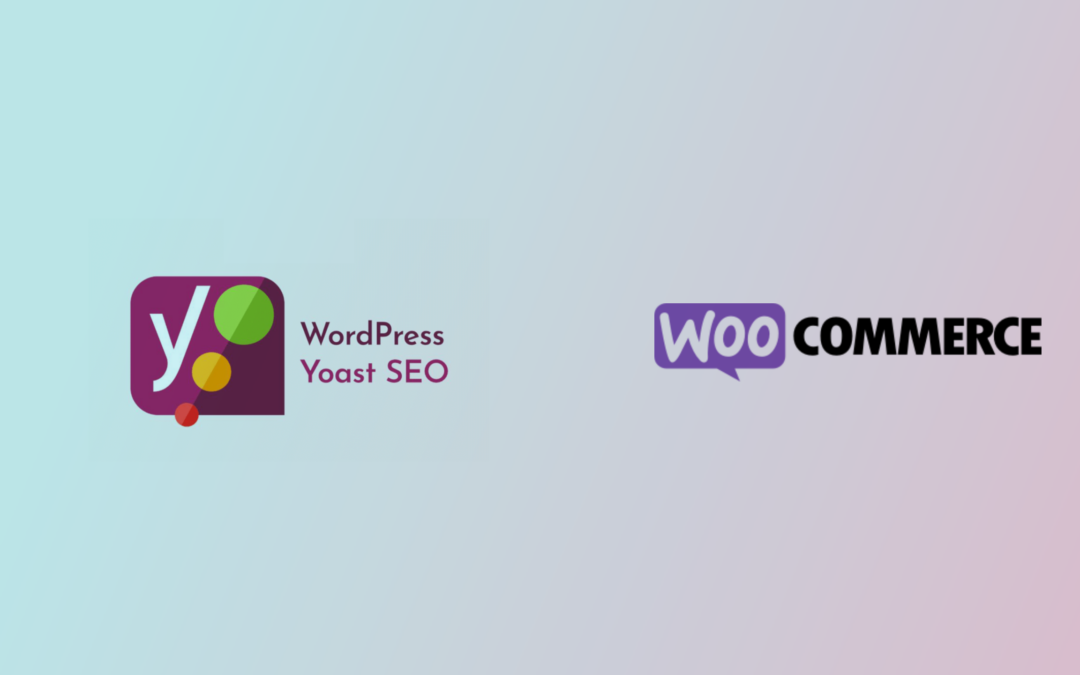Having clear the difference between the net price and the gross price is vital for any business owner.
Usually, your customers are only interested in knowing the net amount, but what really matters to you is the invoice gross price, since this is the money you are going to earn.
Surely, throughout our lives, many of us have had an uncomfortable situation because we have not specified whether the agreed amount was the net price or the gross price. Maybe it has happened to you as an entrepreneur or maybe as a customer.
And if it has not happened to you, just know that you are in luck because after reading this post you will never get yourself in this kind of problem.
In this post, we are going to explain what is the gross amount, the net selling price, the difference between net and gross, and how to calculate them. And, of course, we will show you some practical examples.
So, forget about misunderstandings with customers thanks to knowing how to differentiate and explain clearly what is a net price and a gross price.
What is the gross price?
The first concept you should know about is what a gross price is. Basically because it is the most important for you, and the one that will determine, to a large extent, the course of your income statement.
That is why you should carry out a good study and calculation of this price, to make sure it is the ideal one to cover your income goals.
But what exactly is the gross price of a product?
The gross price is the amount you charge for a certain product or service, and which has been set by you (or recommended by the manufacturer).
This amount must be enough to include both the costs you have incurred in its manufacture or purchase, as well as the net profit necessary to meet your business objectives.
Therefore, setting the gross price is a key point in any business. We will tell you more about it and how to calculate it later on.
It should be noted that the gross price is the money you are going to charge for your item net of taxes, i.e. excluding the impact of any tax charge such as VAT. That is to say, the gross price is the price of the product before applying any type of tax or surcharge.
Another important concept to keep in mind is that the gross amount does not always match your general selling price. In the event that you apply some kind of discount to your customers based on turnover, promotional campaign, or for any other reason, the invoice gross price will be lower than the price initially set. Meaning that the gross price will be the amount resulting after applying said discount.
What is the net price?
Now it is time to define what the net amount is.
This is the final price the customer pays.
The net amount already includes any taxes or levies that must be passed on to your gross prices.
For instance, budgets are usually calculated in gross prices because the type of taxes, or percentages to be applied, may vary depending on the type of customer, their activity or place of residence, among other factors.
On the other hand, if you have an e-commerce whose customers are retail consumers, to avoid confusion it is best to reflect prices in RRP (recommended retail price) format. This way you will make sure that the end consumer knows at all times how much each product will really cost, except for the shipping costs (if any) depending on the delivery address.
To be clear: the net price includes VAT and other taxes or deductions applied (income tax, equivalence surcharge, …). This tax charge may vary depending on the type of product (basic necessities, education, general, etc.), your type of business (self-employed professional, company, etc.) and your customer (individual, community, developer, etc.).
Therefore, in order to avoid problems with the Tax Agency, it is important to be well informed about the different tax rates to apply depending on each case.
Some people make the mistake of thinking that this final sale price, or net amount, is what the company actually charges. Nothing further from the truth, all the VAT charged goes directly to the Tax Office, via the different tax forms that companies and self-employed people are obliged to pay.
Difference between net and gross price
The net and gross price of an invoice can sometimes match (for instance, if an invoice is exempt from VAT), but this is not usual.
As we have already mentioned, the gross price is the price that the seller has set based on their costs and their desired profit margin.
On the other hand, the net price is the final amount that the customer will pay after applying taxes, deductions and/or discounts.
As you can see, the difference between gross and net is very important depending on which side you are on (seller or consumer).
When submitting a quotation or entering into a negotiation, it is essential to make the terms clear to avoid future complaints or arguments. Are you talking about net prices or gross prices? Make this clear from the start, preferably in writing, to prevent misunderstandings or delays in payment or advance invoices, due to disputes arising from this issue.
How is the gross and net price calculated?
Calculating the net price of a product is very easy if you are familiar with the current tax laws.
On the other hand, although the gross price is very easy to identify in estimates and invoices (it matches the tax base), its calculation is a much more complex process. Let’s take a closer look.
How to calculate the gross price
It is clear that the gross price is the most important figure for a business. Its correct calculation will depend, to a large extent, on the good financial performance of the company.
But do you know how to calculate the gross price of a product or service?
In this post we are not going to delve into it since it is a very complex and technical process, but we are going to give you a few tips so that you can have a guide to help you make this calculation.
That being said, here are a few guidelines to calculate the gross price:
Cost of manufacturing or purchasing the product: do a detailed study of the entire process and take into account the relevant expenses (materials, labor, logistics, etc.). Post-manufacturing/purchasing costs: once you have acquired or elaborated the product, there are other costs that you must include. For instance, marketing campaigns, storage costs, handling costs, etc.
General expenses: here you should include all the fixed costs that your company has, and that you cannot directly pass on to the other sections. We are talking about expenses such as rent, administration, general consumption, human resources department, financial and/or labor advisors, civil liability insurance, etc. This total should be passed on proportionally to each item according to your sales prospects.
Profit margin: once all of the above items have been calculated, you must apply a certain percentage enough to be able to reach the desired gross and net profit, and to deal with unexpected expenses or other unforeseen situations.
In addition, there are a wide variety of pricing policies. Some companies prefer to establish a fixed price they consider optimal and competitive. Others, on the other hand,
choose to create a “general price list” and play around with these amounts depending on the market situation.
We often see this practice among e-commerce companies that sell their products on highly competitive platforms such as Amazon or Google Shopping. In these cases, the most efficient approach is to define an intelligent pricing strategy and execute it in an automated way. This requires price monitoring and dynamic pricing tools such as Boardfy.
Either way, in the end it is a matter of setting a price that meets your needs and allows you to reach your goals as quickly as possible, while being competitive. If the latter is not met, it will be more difficult to reach a good number of sales, unless you are a premium brand.
Example of gross price calculation
Depending on the pricing strategy chosen, the gross price will be higher or closer to the market standard.
As we mentioned before before, its calculation is a complex process and depends on multiple factors. You can take as an example these basic calculations to help you set your gross price:
Let’s assume you have an e-commerce, and you sell products that you buy directly from the factory. To calculate the gross price, or final selling price (before taxes), of a given product you need to keep in mind the points we talked about before:
Purchase cost: let’s imagine that you bought a batch of 1,000 units and that each one cost you 5€. But you were charged €100 for shipping costs, so the acquisition price was €5.10/unit.
Post-purchase costs: when buying large batches, you are forced to have your own or rented space to store them. And, in addition, someone has to place the boxes on the shelves. So this labor and storage cost must also be passed on to you. Let’s estimate that this total cost amounts to €600, which means an additional €0.60/unit.
Overhead: this amount will vary greatly depending on the type and situation of each company. To simplify, let’s estimate that it will be enough to increase by 20% the resulting price so far. In this example it would be: (5.10€ + 0.60€) x 20% = 6.84€/unit.
Profit margin: businesses are created to make money and this is mainly achieved through the profit margin. Here the range of percentages is quite wide. For instance, if you are going to apply a premium pricing strategy to these items, the margin will be significantly high. But if you want to break the market by adjusting your prices to the maximum, this margin will be small. As a reference, let’s set it at 40%. Then, the final gross price of your product will be set at €9.58/piece.
These figures are too general and should be taken for information purposes only. The only way to define your pricing strategy in a well-founded way is by carrying out a good market research and study your own business model too.
How to calculate the net price
Calculating the net price is easy if you have a good grasp on the points we have discussed above.
If you don’t recall them all, don’t worry. Let’s take a more detail look.
In most cases, you will only have to apply the corresponding VAT to the gross price depending on the type of product.
What VAT percentage do you have to apply?
Here are the different VAT rates that exist:
General rate (21%): this is the rate applied to most goods and services. Reduced rate (10%): this percentage is applied to a series of products or services such as: some food for people and animals, eyeglasses, passenger transportation, home repair or renovation works among others.
Super-reduced rate (4%): this rate is applied to products known as basic necessities, such as bread, milk, vegetables, medicines, books or newspapers.
Exempt from VAT (0%): this list is shorter, but among the activities exempt from VAT are education through accredited public or private centers, house rental or health care.
Besides VAT, the other taxes that can affect the gross price, and therefore modify the net price, are personal income tax (IRPF) and the equivalence surcharge.
We hope to be of help with this information, but you should always consult a tax and accounting advisor to study your personal case and confirm which taxes and percentages should be applied.
As for the calculations, the easiest way is to use an invoicing and accounting program that performs the corresponding operations according to each specific case you want. If this is not possible, you can also use an Excel spreadsheet incorporating the necessary formulas.
Examples of net value and gross value
Here are 2 different illustrations of how taxes can affect the net and gross value. If you don’t know how to get the gross value of an invoice, it is very easy:
The net price corresponds to the invoice total and the gross price corresponds to the taxable amount.
Example 1. Invoice applying 21% VAT
Example 2. Invoice applying VAT and income tax
In these examples, although the taxable base is the same in both cases, you can see that the net amount varies.
The only time the net price and the gross price will match is when the product or service is exempt from VAT or any other tax or deduction, at least in terms of what impacts the net price of an invoice.
Where should you apply discounts?
If you understand the difference between gross and net, you will surely know the answer by now: discounts or reductions are applied to the gross price, i.e. before applying the corresponding tax charge.
So, if the gross price in our examples was 300€ and you decide to give a 15% discount to your customer, the final gross price will be 255€. And it is on this amount where VAT and other taxes and deductions will be applied.
Other concepts relating to gross and net quantity
When we talk about gross and net, we are not always referring to the price of a goods, products or services.
There are other scenarios where this terminology is also used, for instance when talking about salaries.
In a payroll, we can differentiate between the gross, the net, or the liquid wages to be perceived. Or, in other words, the net and gross money received by the employee.
The gross salary or wage is the amount for which the employee pays contributions and what they really earn, although sometimes they are not aware of it.
On the other hand, the net salary or wage, is the part of the salary that the employee receives after deducting the different taxes or concepts that correspond to it.
What are these deductions?
These different salary concepts can be divided into 2 main blocks:
Miscellaneous contributions (unemployment, training education and common contingencies): the company pays it to the Social Security through social insurance.
IRPF Personal income tax withholding: the company pays it directly to the Tax Office through the corresponding forms, but it is ultimately settled in a personalized way through the income tax return.
While the former usually represents a general percentage for all employees (around 6.5% of the gross amount), the IRPF varies according to the salary and family situation of each employee.
All this means is that the difference between gross and net income on a payroll is usually high.
Increase your profits with Boardfy
Now that you know what gross and net are, you are definitely aware of how important it is for your business to properly set your gross price: setting it too high can mean you are not competitive, and setting it too low can mean you are selling below your total cost.
To prevent this from happening, the best thing to do, besides a good study of your own business, is to have a powerful tool for price monitoring and Dynamic Pricing.
And if you want to use the best, then you need Boardfy.
Why?
Here are a few reasons:
Monitor and analyze your competitor’s prices almost in real time. Be the best competitor as long as your margins allow it.
Make sure you never sell below your costs.
Detect your opportunities and maximize profit.
Identify your competitors in any marketplace you sell at.
Make a smart pricing strategy.
And if you sell on Google Shopping…
We’re helping our clients increase their sales by 15-20% while saving up to 35% on their campaigns!
And the best part?
You can request a free demo now!
Interested?
Then click below!








